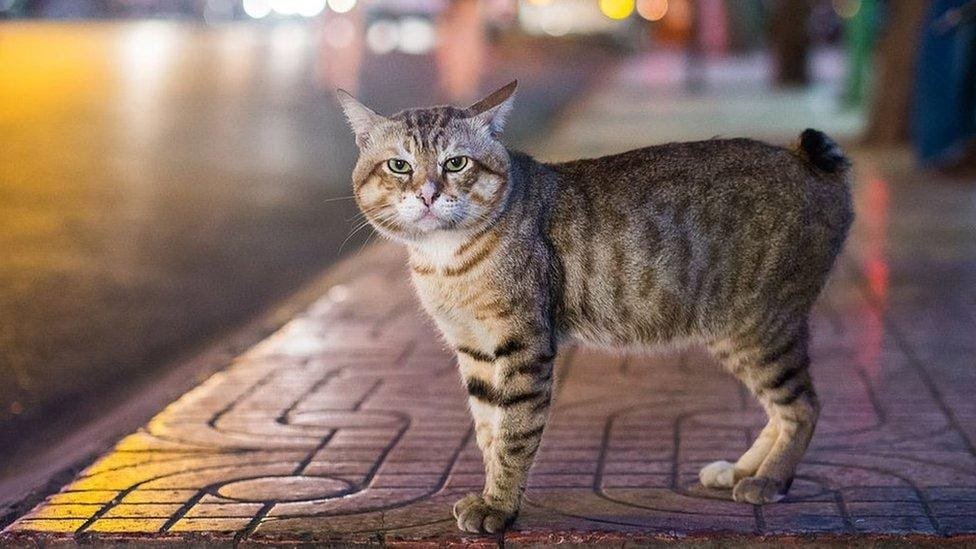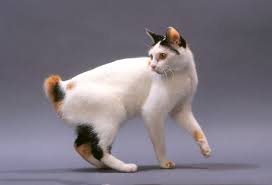Cats come in many shapes and sizes, from sleek, slender breeds to muscular, stocky ones. However, there’s something truly unique about cats that are born without tails.
Some cat breeds have been genetically developed or naturally evolved to be tailless, making them stand out among their feline counterparts. These cats are not only adorable but also often have interesting personalities and histories. In this article, we’ll look at five fascinating cat breeds that are born without tails.
1. Manx

The Manx is by far the most well-known tailless cat breed. Native to the Isle of Man, this breed is famous for its taillessness, although not all Manx cats are completely tail-free. Some may have short stubs, while others have a full tail. But it is the tailless variety, called “rumpy,” that is the most iconic.
Manx cats are medium-sized, with rounded faces and ears, giving them a very soft, gentle appearance. Their bodies are muscular and compact, which allows them to be agile and good at jumping. While they might look a little different due to their lack of tail, they are known for being friendly, affectionate, and intelligent. Manx cats are also quite playful and often form strong bonds with their owners. They are loyal companions, and their lack of tail doesn’t stop them from being incredibly expressive.
The lack of tails in Manx cats is due to a genetic mutation. This mutation affects the spine and results in some Manx cats being born without tails altogether. It’s important to note that because of this mutation, Manx cats can sometimes have spine and nerve problems, so proper breeding practices are essential to ensure healthy cats.
2. Cymric
The Cymric is essentially the long-haired version of the Manx cat. Like the Manx, the Cymric can also be born with no tail or a very short tail. Their long, silky coat is one of their defining features. These cats are often described as a mix between a cat and a bunny because of their soft fur and rounded appearance.
Cymrics are known for their playful and affectionate nature. They tend to be very friendly and enjoy being around their families. They’re often seen following their owners around the house, and they love to get involved in whatever’s going on. Despite their taillessness or short tails, Cymric cats are incredibly active and agile. They love to climb, jump, and play with toys, making them great pets for families with children.
The Cymric breed shares the same genetic mutation responsible for the lack of a tail as the Manx, but with the added feature of longer fur. Cymrics can have various tail lengths, from completely tailless (rumpy) to a longer, bobbed tail. They are an excellent choice for people who love the Manx but prefer a long-haired cat.
3. Japanese Bobtail

Unlike the Manx and Cymric, the Japanese Bobtail is not born without a tail but instead has a naturally short tail. This breed is one of Japan’s most famous cats and is often featured in traditional Japanese art and folklore. The Japanese Bobtail’s short tail is very unique — it’s typically about 3 to 5 inches long and is often kinked or curled at the tip.
Japanese Bobtails are known for their playful and energetic personalities. They love to jump, climb, and chase after toys, and they’re often described as dog-like because of their love for interactive play. These cats are highly intelligent and enjoy figuring out puzzles or tasks, which makes them fun and engaging pets to have around the house.
Although the Japanese Bobtail is not technically tailless, its distinct bobbed tail sets it apart from other breeds. The short tail is considered an endearing feature of the breed, and these cats are often seen with a “bobbed” tail in traditional artwork, such as in the popular “Maneki-neko” (lucky cat) figurines.
4. Kurilian Bobtail
The Kurilian Bobtail is another breed with a short, bobbed tail, much like the Japanese Bobtail. However, this breed hails from the Kuril Islands, which lie between Russia and Japan, giving it a different geographical and cultural background. The Kurilian Bobtail is known for its friendly and calm temperament. These cats are highly social, enjoy interacting with their families, and tend to get along with both people and other animals.
Like the Japanese Bobtail, Kurilian Bobtails have a unique, short tail that is often curled or kinked. This bobtail is a natural genetic trait that differentiates them from other breeds. In addition to their striking tails, Kurilian Bobtails have a muscular, athletic build that allows them to be agile and nimble.
These cats are also known for their intelligence and playfulness. They are often described as “dog-like” because they can learn tricks, fetch objects, and even walk on a leash. Kurilian Bobtails are loyal companions and enjoy spending time with their human families, making them wonderful pets for households of all kinds.
5. Stumpy Tail Cat
The Stumpy Tail Cat is not a specific breed but rather a general term used to describe cats with naturally short tails that occur due to genetic mutations. These cats are often found in various regions and have a tail that is much shorter than usual. In some cases, these cats are born without tails altogether.
Stumpy tail cats are often found in areas where genetic mutations for tail length have developed, such as in certain parts of Australia and the United States. These cats may come from mixed breeds, but they share the common trait of having short or no tails.
The personality of stumpy tail cats can vary greatly depending on their genetic background. However, they tend to be affectionate, playful, and friendly, just like other cats. While they may not belong to a specific breed, their unique appearance and engaging personalities make them popular as pets.
Cats with no tails or short tails are certainly a unique and charming sight. Whether you’re interested in the playful Manx, the long-haired Cymric, or the quirky Japanese and Kurilian Bobtails, these cats bring a lot of joy and personality to their homes. Despite their taillessness, they remain just as loving, energetic, and devoted as any other breed of cat. So, if you’re looking for a cat that’s a bit different from the rest, these breeds might be the perfect choice for you.

